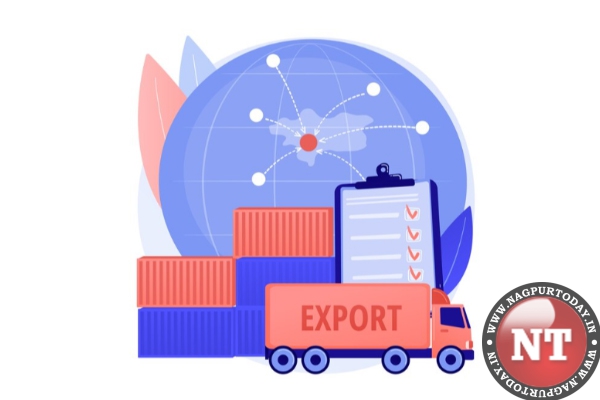
India has undoubtedly emerged as a global frontrunner in the realm of exports, owing to its diverse cultural heritage and abundant prospects. It’s a captivating journey that awaits, so let’s set out to explore the dynamic and constantly evolving realm of India’s exports. Whether you’re an ambitious exporter on the rise or merely someone with a curious fascination for the world of international trade, we invite you to come along as we delve into the intricacies of ‘how to export from india.
Why Should You Consider Exporting?
a. Boosting Foreign Exchange Reserves: One significant reason to export from india
is to earn foreign currency. This not only benefits you but also contributes to your country’s economic well-being by strengthening its foreign exchange reserves.
b. Building Trustworthiness: Exporting can enhance your business’s reputation. Companies that export their products are often seen as more trustworthy because they need to meet stringent international standards, showing their commitment to quality.
c. Cultural Exchange and Business Growth: Exporting opens doors to cultural exchange and exciting business opportunities. It allows you to connect with people from different backgrounds, fostering innovation and expanding your market reach.
d. Exploring New Horizons: As you venture into export markets, you get the chance to explore new territories, discover advanced technologies, and build relationships with international partners. This exploration can lead to valuable business advancements.
e. Steady Demand, Regardless of Seasons: Exporting can provide a stable market for your products, reducing the impact of seasonal fluctuations. This ensures a consistent flow of orders and revenue throughout the year.
f. Competitive Edge: Engaging in international trade makes your business more versatile and less vulnerable to market shifts. While one market may slow down, another could flourish, offering a buffer against uncertainties.
Key Considerations for Exporting:
a. Geographical Considerations: When venturing into exports from india, it’s crucial to assess geographical factors. This includes choosing the target country, state, or region. Consider time zones for efficient communication and also weigh urban vs. rural locations for logistical aspects like shipping and distribution.
b. Economic, Political, and Legal Environment: Navigate the complex landscape of regulations, which may involve quarantine requirements, labeling standards, and consumer protection rules. Understand the duties and taxes applicable in your target market, as these can significantly impact pricing and profitability.
c. Demographic Insights: Study the demographics of your target market, including factors like age, gender, income levels, family structures, and occupation. Cultural beliefs play a pivotal role in consumer behavior, so understanding the local culture is essential. Analyze your major competitors, similar products, and key brands in the market.
d. Market Characteristics: Assess the market’s size and potential for growth. Determine the availability of domestic manufacturers, agents, distributors, and suppliers who can facilitate your entry into the market. Understanding the market’s dynamics and competition is vital for crafting a successful export strategy.
What are the procedures for Registration?
a. Registering with DGFT (Director General of Foreign Trade):
DGFT is the primary government body responsible for regulating foreign trade in India. You’ll need to obtain an Importer-Exporter Code (IEC) from DGFT. The IEC is a 10-digit code required for all import and export activities. You can apply for the IEC online through the DGFT website.
b. Registering with Export Promotion Councils:
Export Promotion Councils, like the Trade Promotion Council of India, are non-profit organizations focused on promoting various Indian goods in global markets. They’re your link between exporters and the government. To get started with them, you’ll need a Registration-cum-Membership Certificate. It’s a good idea to have a copy of your IEC number for this. You’ll need to pay the membership fee, usually by check or draft, following the EPC’s guidelines. Your RCMC certificate typically stays valid for five years.
c. Commodity Boards Registration:
Commodity Boards are government bodies in charge of regulating and promoting specific exports like tea, coffee, rubber, spices, and tobacco. If you deal in these commodities, you might need to register with the relevant Commodity Board.
d. Registering with Income Tax Authorities:
When you export from india, , you’ll need to register with the Income Tax Authorities
e. Export Licensing:
Sometimes, depending on what you’re exporting and where it’s going, you might need an export license. These licenses are issued by relevant authorities after carefully reviewing the details of your export transaction.
What are the documents required?
- Customs Declaration Form (CP2/CP3): A declaration of parcel contents.
- Dispatch Note: Instructions for the postal department.
- Commercial Invoice: Details the goods’ value.
- Consular Invoice: Required for specific countries, certified by the consulate.
- Customs Invoice: For preferential tariff rates in certain countries.
- Legalized/Visaed Invoice: Authenticated by consulates.
- Certified Invoice: Certifies origin or compliance.
- Packing List: Lists package contents and weights.
- Export Packing List: Detailed version for international shipments.
- Shipper’s/Buyer’s References: Verify shipment details.
- Certificate of Inspection: Confirms goods’ condition.
- Black List Certificate: For countries with strained relations.
- Manufacturer’s Certificate: Proves manufacturing origin.
- Certificate of Chemical Analysis: Ensures item quality.
- Certificate of Shipment: Confirms shipment.
- Health/Veterinary/Sanitary Certificates: For specific products.
- Certificate of Conditioning: Certifies compliance.
- Antiquity Measurement: For antiques.
- Shipping Order: Reserves space on a vessel.
- Cart/Lorry Ticket: For port gate admission.
- Shut Out Advice: Lists packages not loaded.
- Insurance Certificate: Covers cargo loss or damage.
- Inspection Certificate: For regulated products.
- Short Shipment Form: Claims return for short-shipped goods.
What customs steps must Exporters follow?
a. Registration: Obtain a BIN from the Directorate General of Foreign Trade.
b. Export Promotion Schemes: Register for licenses if using these schemes.
c. Processing of Shipping Bill: Complete forms for different export types.
d. Quota Allocation: Apply allocation labels to invoices if necessary.
e. Goods Arrival at Docks: Port authorities check goods against documents.
f. System Appraisal of Shipping Bills: Most processing is automated.
g. Customs Examination: Verify and record cargo details.
h. Loading of Goods: Provide the “Let Export” bill for container loading.
i. Sample Check: If needed, draw and test samples.
j. Drawback Claims: Processed electronically post-export.
k. Shipping Bill Generation: Two copies signed by Customs and agents.
Summary – Navigating the customs procedures for exports from India is essential for exporters looking to expand their global reach. With the growing trend of international trade, platforms like Amazon Global Selling offer opportunities for Indian businesses to showcase their products on a global scale. By following the prescribed customs procedures and leveraging platforms like Amazon Global Selling, Indian exporters can tap into a world of potential customers and unlock new horizons for their businesses.
















